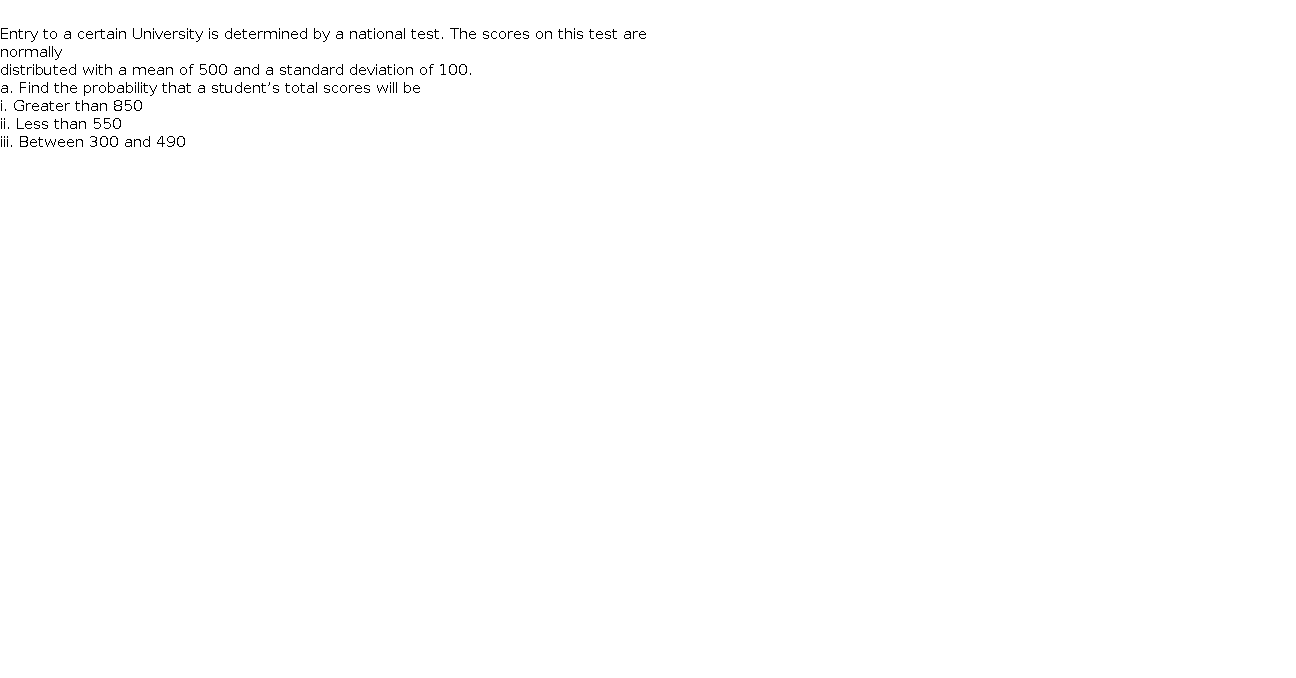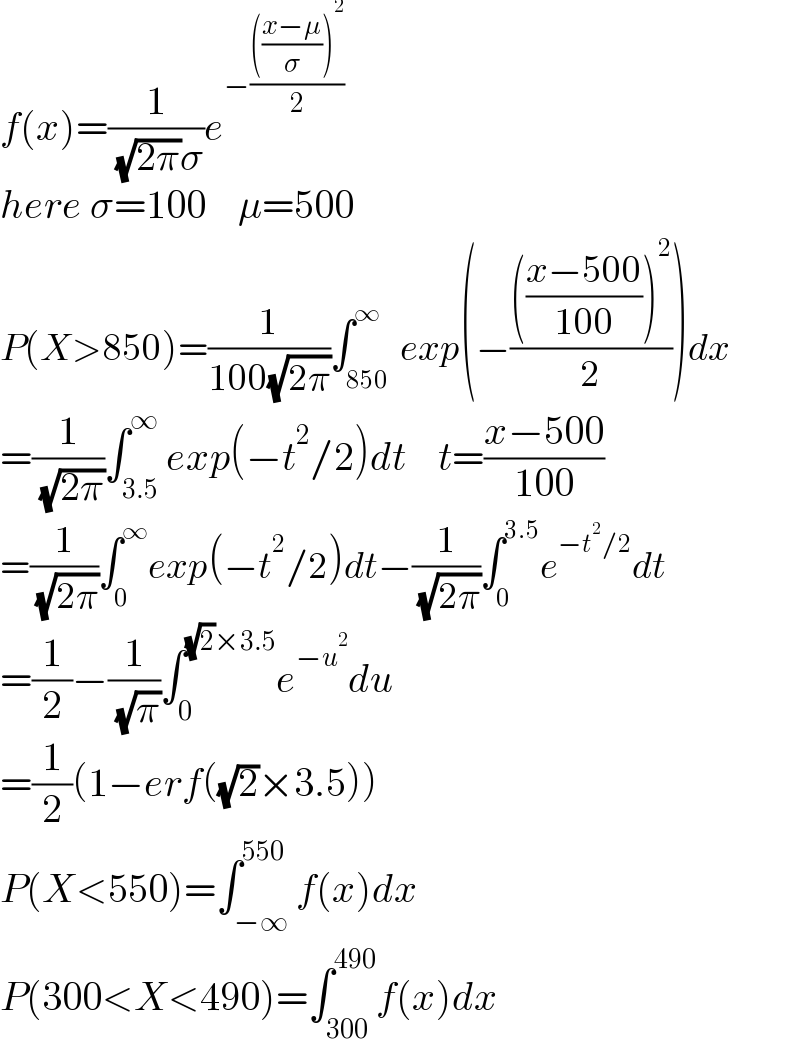Question Number 169802 by MathsFan last updated on 09/May/22

distributed with a mean of 500 and a standard deviation of 100.
a. Find the probability that a student’s total scores will be
i. Greater than 850
ii. Less than 550
iii. Between 300 and 490
Answered by shikaridwan last updated on 10/May/22

Commented by MathsFan last updated on 10/May/22

